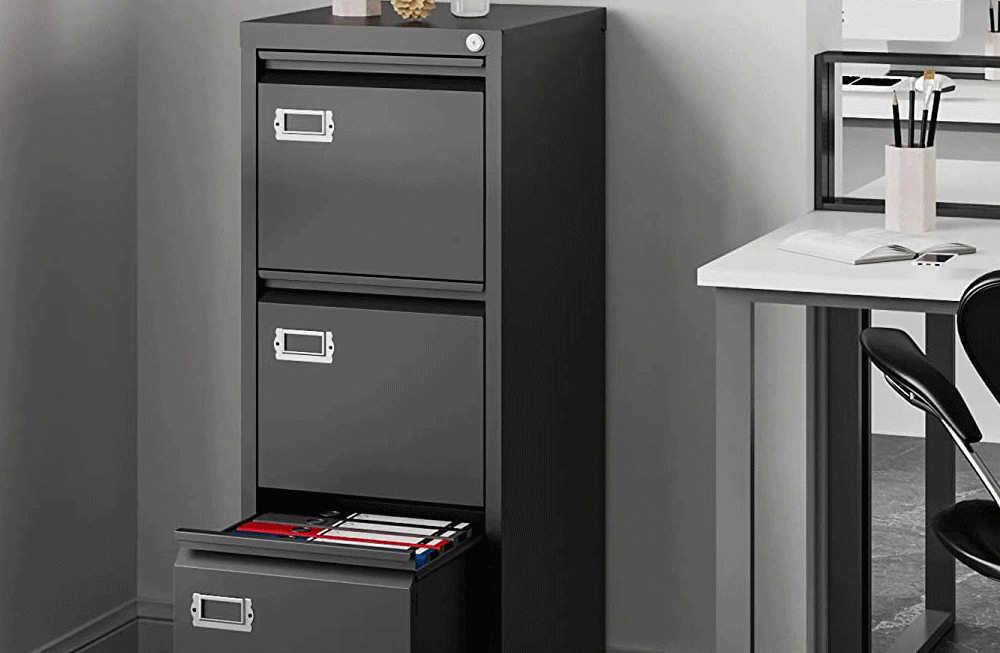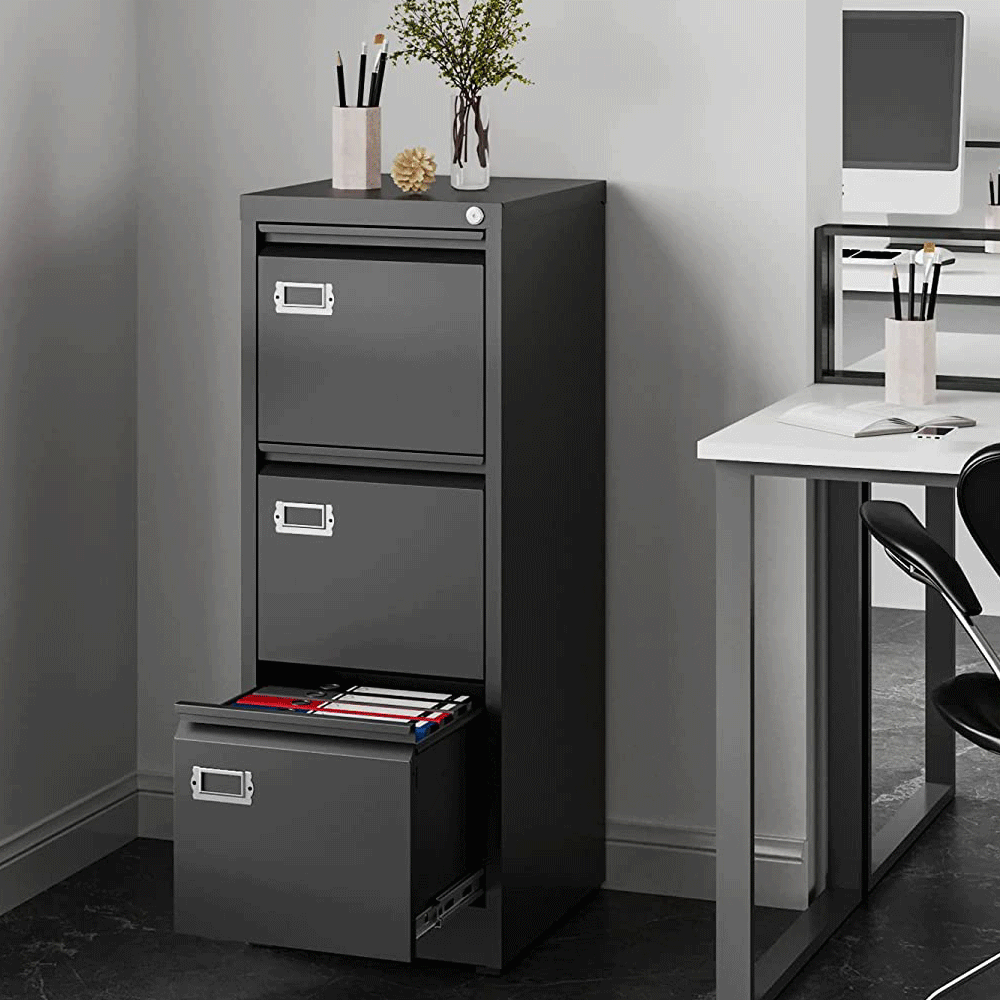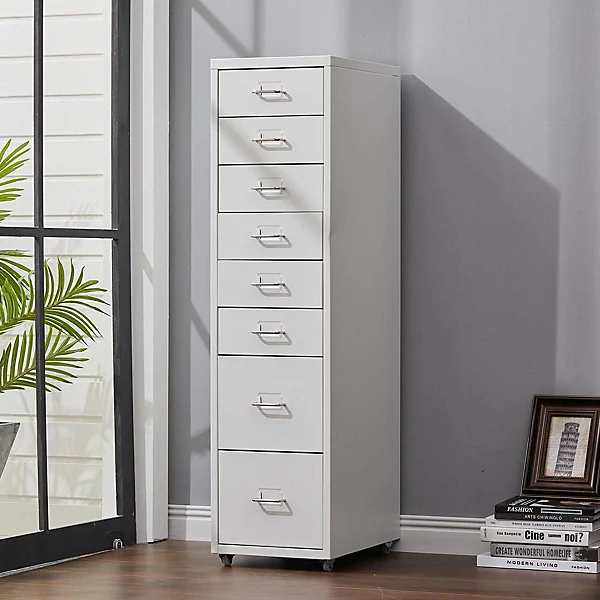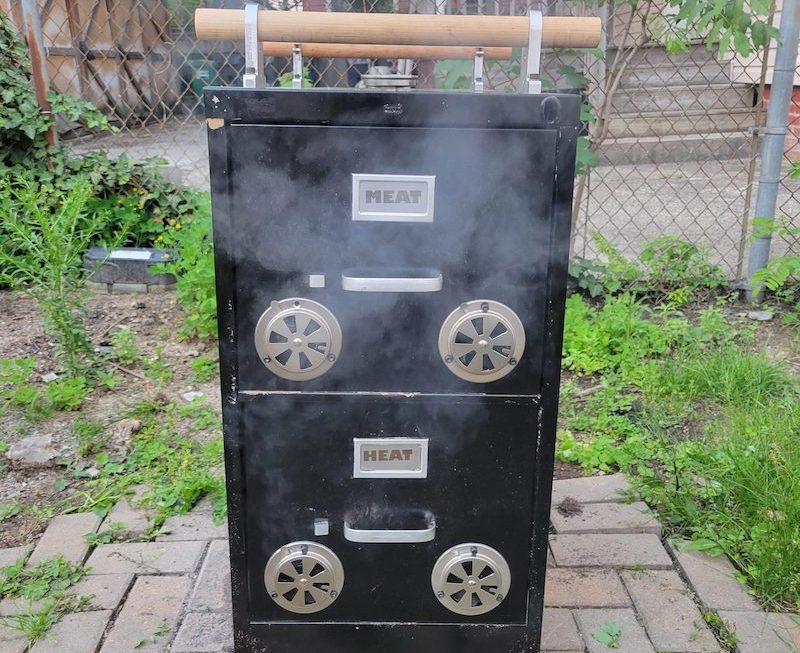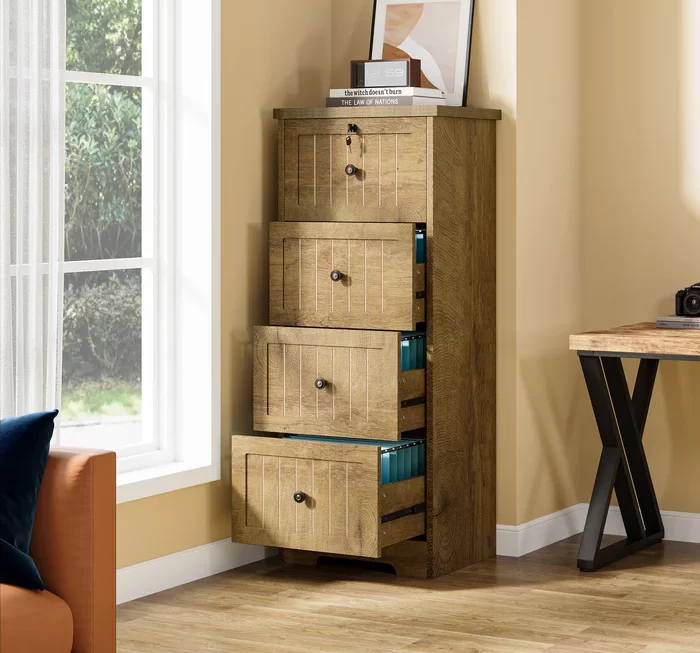The Importance of Efficient Filing Systems in the Workplace
An efficient filing system is critical for any business. It streamlines workflow and enhances productivity. When documents are easy to file and find, employees spend less time searching. This directly impacts time management and operational efficiency.
Here are key reasons why efficient filing systems are a must in the workplace:
- Accessibility: A well-organized large filing cabinet provides quick access to files. This is essential for meeting tight deadlines and handling client inquiries swiftly.
- Space Management: By implementing a large filing cabinet, offices can better manage space. This reduces clutter and frees up areas for other productive uses.
- Security: Secure filing systems protect sensitive information. Large filing cabinets with locks ensure documents are safe from unauthorized access.
- Compliance: Many industries have regulations for document storage. An efficient system helps meet compliance requirements with ease.
- Cost Efficiency: Time saved translates to money saved. A large filing cabinet reduces the time spent searching for documents, lowering operational costs.
- Stress Reduction: A cluttered space can lead to a cluttered mind. An organized filing system reduces stress and boosts morale in the office.
- Professional Image: A tidy office with efficient filing reflects positively on a business. It shows clients and partners that you value organization and efficiency.
In conclusion, integrating large filing cabinets into the workplace not only maximizes space but also supports a productive environment. It’s an investment in the company’s operational success.
Evaluating Office Space to Accommodate Large Filing Cabinets
Before introducing a large filing cabinet into your office, assess the current layout. Consider the workflow and how the addition of a large filing cabinet will impact it. You’ll want to ensure that the filing cabinet enhances efficiency without disrupting operations. Here are steps to evaluate your space for a large filing cabinet:
- Measure Your Space: Record the dimensions of your office. Know how much room you have for the cabinet.
- Analyze Traffic Flow: Understand how employees move around the space. The cabinet should not block high-traffic areas.
- Identify Storage Needs: Determine how many documents you need to store. This influences the size of the filing cabinet you’ll choose.
- Check for Power Outlets: Ensure the placement doesn’t block electrical outlets. These are vital for other office equipment.
- Consider Natural Light: Place the cabinet where it won’t obstruct windows. Natural light is crucial for a pleasant working environment.
- Plan for Expansion: Think about future growth. Will there be enough space if you need more cabinets?
By taking these factors into account, you ensure that a large filing cabinet serves its purpose without hindering your office’s functionality.
Choosing the Right Large Filing Cabinet for Your Office
Selecting the ideal large filing cabinet is vital for any office striving for efficient document management. When choosing a cabinet, consider several factors to ensure it meets your needs.
- Size and Capacity: Compare the cabinet’s dimensions to your office space measurements. Ensure it can hold all your documents without wasting space.
- Material and Durability: Metal cabinets are sturdy and long-lasting. Wooden cabinets add aesthetic value but may not be as durable.
- Locking Mechanism: Security is paramount. Opt for a cabinet with a reliable lock to protect sensitive files.
- Style and Design: Choose a cabinet that complements your office interior. It should blend in, enhancing the overall look.
- Drawer Function: Test the drawers. They should open smoothly and fully for easy access.
- Adjustability: Adjustable shelves or dividers in the cabinet help customize storage as needs change.
- Price: Consider your budget. Look for a balance between cost and quality to find a good value.
- Brand Reputation: Research brands. Look for ones with positive reviews on quality and customer service.
By addressing these points, you can select a large filing cabinet that supports your office’s efficiency and organization.
Innovative Office Layouts Incorporating Large Filing Cabinets
Innovative layouts can make the most of large filing cabinets in office spaces. Here are ways to integrate such cabinets seamlessly and aesthetically:
- Centralized Placement: Position a large filing cabinet at the office’s center. This creates a hub for storage. It also cuts down on travel time for employees needing documents.
- Perimeter Alignment: Aligning cabinets along the office walls maximizes central space. It also keeps files accessible without overcrowding work areas.
- Vertical Space Utilization: Use tall, vertical cabinets to take advantage of high ceilings. This saves floor space and can enhance the office’s feel.
- Island Style Setup: Group filing cabinets together to form an ‘island’. Staff can walk around it. This encourages collaboration and quick access from all sides.
- Under-Desk Cabinets: Install cabinets under desks to make the most of unused space. This ensures personal files are at arm’s reach for employees.
- Zonal Division: Use filing cabinets to define different areas or zones within an open-plan office. This helps in organizing the space according to different teams or departments.
- Integrated Workstations: Combine filing cabinets with workstations. Desks with built-in cabinets support efficiency and save space.
By adopting these creative office layouts, large filing cabinets become a part of the office design rather than an afterthought. They contribute to both function and style, supporting the office’s productivity.
Space-Saving Tips for Large Filing Cabinet Placement
Introducing a large filing cabinet to your office calls for smart placement strategies. Here are tips to help you save space while keeping functionality intact.
- Aim for Corners: Utilize corner areas. They often stay underused. A cabinet here maximizes space efficiently.
- Stack Vertically: Choose tall cabinets. They maximize vertical space. Doing so leaves more room for movement and other furniture.
- Go Mobile: Consider cabinets on wheels. You can move them as needed. This flexibility is key for adapting to various office layouts.
- Utilize Wall Space: Install shelves above the cabinets. This takes advantage of wall space for extra storage without eating into floor space.
- Slim Down: Opt for slimmer cabinet models. If document volume allows, a narrower cabinet can offer significant space savings.
- Multi-Functional Furniture: Seek cabinets that double as surfaces. Some can serve as impromptu meeting tables or employee sit-stands.
- Combine Storage Areas: Merge lesser-used storage spots. A single large filing cabinet is better than several small ones scattered around.
- Declutter Regularly: Keep only essential documents. Routine clearing of outdated files frees up space and makes organization easier.
- Inside Door Racks: Use door-mounted racks. They can hold frequently accessed files or supplies. This keeps the main space tidy and organized.
By applying these space-saving tips, you maximize your office area. You also boost productivity, thanks to an organized and accessible documenting system.
Maintaining and Organizing a Large Filing Cabinet
Maintaining and organizing a large filing cabinet is crucial for keeping an efficient workspace. Here are strategies to ensure your filing system remains user-friendly and effective:
- Regular Cleaning: Dust off your cabinet periodically. This prevents buildup and keeps the office looking clean.
- Label Clearly: Use clear and consistent labels on drawers and files. It saves time when looking for documents.
- Categorize Files: Sort files by relevance, project, or date. This makes retrieval straightforward.
- Use Color Coding: Assign colors to different categories. It helps in finding files faster.
- Purge Unnecessary Papers: Review files routinely. Remove outdated items to free up space.
- Implement a Filing System: Choose alphabetical, numerical, or another system that suits your office best. Stick to it for consistency.
- Train Your Staff: Ensure all team members know the filing system. Proper training reduces misfiled documents.
- Regularly Update Files: Keep records current. Update them as new information comes in.
- Use Divider Tabs: Divider tabs keep files separated and organized. They are helpful for quick access.
- Allocate Space for Growth: Leave some empty space in the cabinet. This anticipates future storage needs.
- Secure Important Documents: Some papers require extra protection. Use lockable drawers or sections as needed.
- Audit File Accessibility: Check if files are within easy reach. Rearrange as necessary.
By following these steps, a large filing cabinet will aid not only in maximizing office space, but also in preserving a productive and orderly environment.
Alternatives to Traditional Filing Cabinets for Maximizing Space
When seeking alternatives to traditional large filing cabinets, space-saving solutions can be a game-changer. Here are innovative options that can enhance storage efficiency:
- Digital Document Management: Transition to a paperless office by digitizing documents. This can drastically reduce the need for physical storage.
- Wall-Mounted Filing Systems: Utilize vertical space. Install wall-mounted files to keep floor space open for other uses.
- Modular Storage Units: Select storage that can adapt to your needs. Modular systems can grow or reconfigure as your business changes.
- Storage Ottomans: Choose multi-functional furniture. Ottomans with storage can hold files and serve as seating.
- Hanging Pockets: Use hanging file pockets over doors or panels. They’re a simple way to clear desk space and make documents quickly accessible.
- Collapsible File Holders: Opt for foldable, portable file storage that can be tucked away when not in use.
- Cloud Storage: Invest in cloud services for file archiving. Access files from anywhere, reducing the need for physical file space.
- Mobile Pedestals: Consider pedestals on wheels. Staff can roll them out when needed and tuck them away afterwards.
- Built-In Shelving: Custom-built shelves can provide a streamlined look and tailor-fit storage for your documents.
- Overhead Bins: Maximize the unused space above work areas with overhead bin storage for light paperwork.
By exploring these alternatives to a large filing cabinet, you can free up office space and potentially improve the workflow and aesthetics of your work environment. These solutions also show a commitment to evolving office needs and can positively impact productivity and office dynamics.
The Future of Office Storage: Trends in Large Filing Cabinet Design
The office storage landscape is changing, with innovative trends in large filing cabinet designs emerging. These trends focus on optimizing space, enhancing usability, and integrating technology, pointing towards a future where storage solutions are as efficient as they are stylish.
- Modular Design: The adaptability of modular cabinets allows for customization to fit changing office needs. They can expand or retract, which is ideal for growing businesses.
- Eco-Friendly Materials: There is a shift towards using sustainable materials in cabinet construction. Offices are choosing cabinets made from recycled or renewable resources.
- Smart Locks: With increased concern for security, new cabinets come with smart locking mechanisms, controlled by apps or biometrics for enhanced protection.
- Integrated Technology: Some cabinets now feature built-in charging stations or touch screen interfaces for ease of use and to support tech-heavy work environments.
- Collaborative Spaces: Filing cabinets are being designed with flat, sturdy tops to double as standing meeting points, fostering teamwork within the office.
- Aesthetic Versatility: Office storage is no longer just functional; it’s also about aesthetics. Cabinets with sleek designs and customizable color options are in demand.
- Compact Footprints: At the forefront are cabinets designed to be space-efficient without compromising on storage capacity, suitable for smaller modern offices.
- Health Conscious: Some filing cabinet designs incorporate features to encourage movement, such as sit-stand adaptability, addressing health concerns from prolonged sitting.
These trends in large filing cabinet design aim not only to save space but to create a more pleasant, efficient, and versatile work environment. Choosing the right cabinet means considering not just the needs of today, but also the possibilities of tomorrow.
